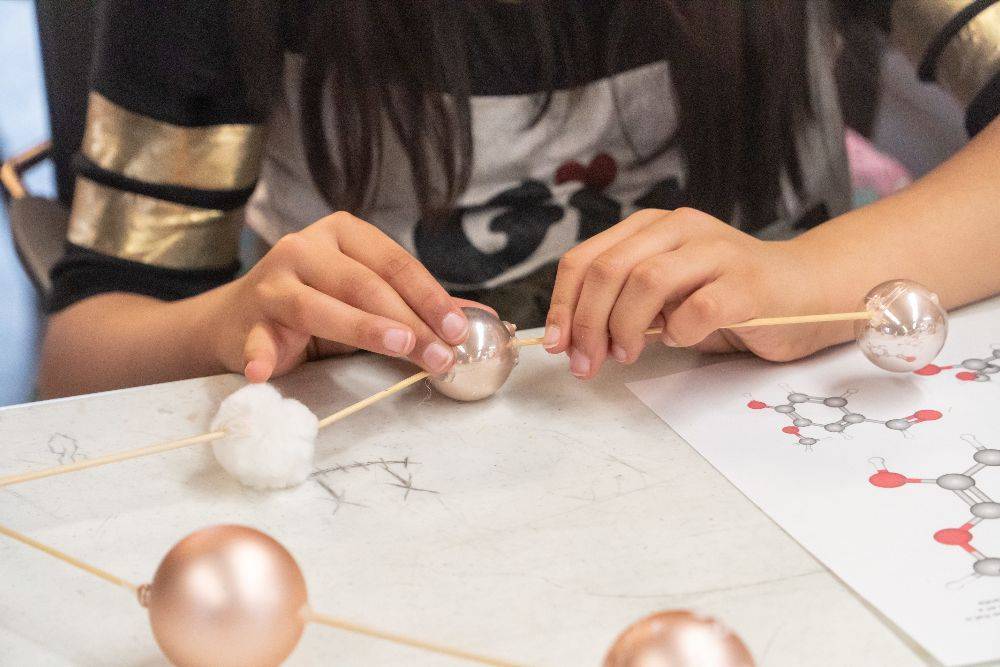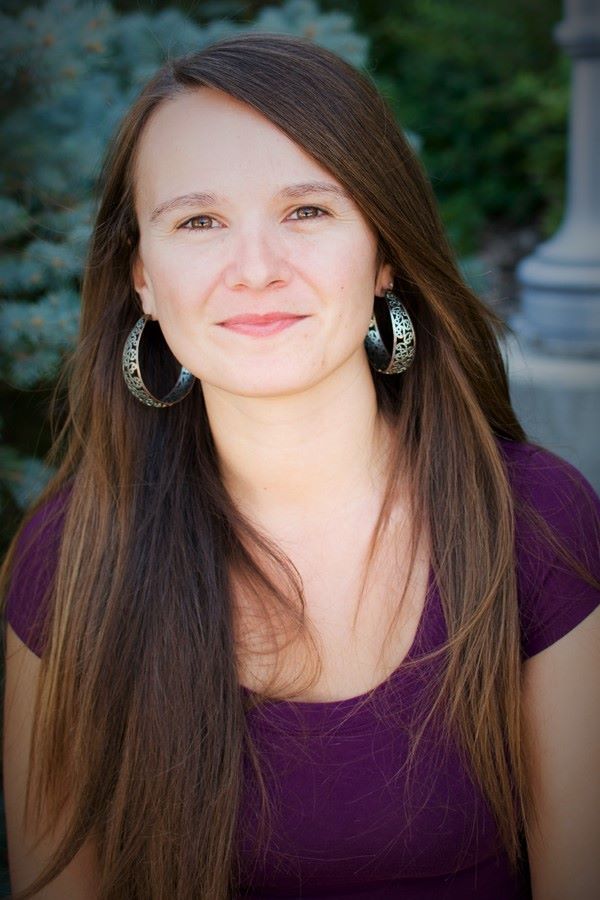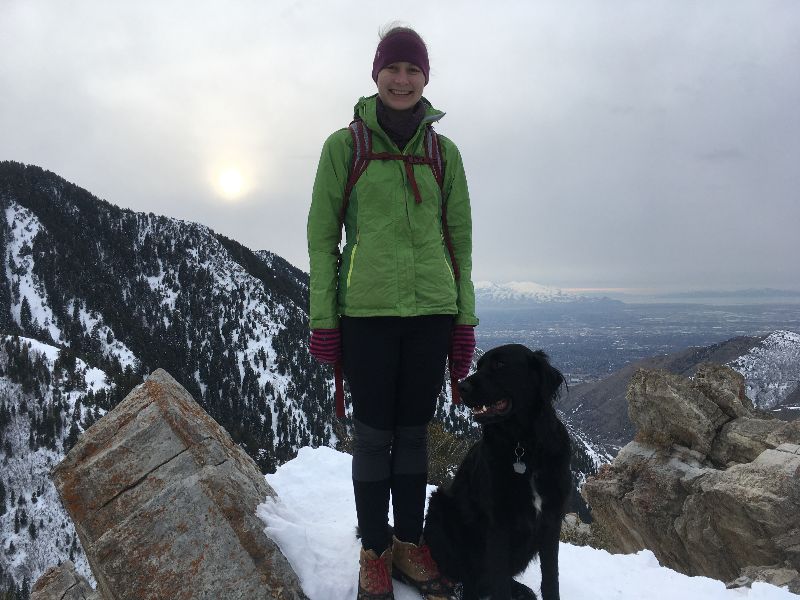Fall 2020 Newsletter

Letter From STEMAP Team
Dear STEM Ambassadors and Community Partners,
We are hard at work moving the STEM Ambassador Program forward through online workshops and remote engagement activities. We hope that even beyond COVID-19 restrictions, these adaptations will make STEMAP more accessible to scientists interested in public engagement.
We are now recruiting for our online 2021 Spring Cohort! More details about the training and the application can be found on our website and in this newsletter. The application closes December 9th.
We are excited to be running our first training for staff at the Institutional Review Board at the University of Utah. The five-member cohort is halfway through their training, and will be conducting remote engagement projects this winter.
This issue of the newsletter features several reflection articles from STEMAP Alumni who conducted engagement activities remotely. Read on to find out more about their experiences adapting to a contact-free format!
Finally, we are grateful for your continued support of the STEM Ambassador Program. We appreciate all the hard work Ambassadors and community members have done to adapt to the unusual conditions of 2020. We hope you have a happy and safe holiday season!
Thank you,
Nalini Nadkarni, Director
Caitlin Weber, Program Manager
Megan Young, Program Coordinator
Recruiting for STEMAP 2021 Cohort

We are thrilled to announce that we will be offering STEMAP training this spring for University of Utah faculty, staff, post docs, and graduate students!
COVID-19 has fundamentally changed how the public can engage with science. Limited in-person gatherings and reduced access to schools, museums, and other traditional learning venues have increased the need for creative public engagement strategies. The STEMAP team spent this past fall developing an online training to prepare STEM Ambassadors to address these new challenges safely and effectively.
The training will run from January- April 2021. Ambassadors will participate in a series of workshops and one-on-one meetings to learn how to form meaningful relationships in the community and carry out public engagement projects. Training will take place online and all engagement projects will be conducted in accordance with University of Utah public health guidance.
Visit the STEMAP website for more information and to access the application!
STEMAP IRB Cohort
This October we partnered with the Institutional Review Board Office to launch a new public engagement training for research ethics professionals! Participants are halfway through their training and will begin conducting remote engagement projects this winter.
Opportunity for Engagement: STEM Community Alliance Program
The STEM Community Alliance Program has been working to establish remote methods for engagement with youth-in-custody facilities, and is looking for scientists to participate in science discussions and activities this fall.
Youth In Custody facilities house post-conviction juveniles and provide in-facility schooling. These students typically do not have access to museums or other forms of informal science education.
No in-person visits will be permitted for the time being, but presenters will be able to lead students in remote hands-on projects and presentations.
If you are interested in planning an an activity with STEMCAP, please email Laura George.
Collaboration with Atmospheric Sciences and STEM Community Alliance Program
Dr. Rich Fiorella in the College of Mines and Earth Sciences at the University of Utah recently received funding from the National Science Foundation to improve understanding of the water cycle. As part of this project’s Broader Impacts, he and colleagues will be working with STEMAP’s sister program, the STEM Community Alliance Program, to develop educational materials and conduct a citizen science conservation project with students in a youth-in-custody facility.
Read more about the project in the Fall Edition of the Department of Geology and Geophysics Newsletter.
Ambassador Reflections
The following articles were written by STEM Ambassadors about their engagement experiences, which took place remotely due to COVID-19 closures. In-person programs are postponed until further notice.
Travis Morrison

With the recent COVID-19 pandemic, a lot of our lives have been transformed. For myself, I was scheduled to perform an engagement activity through STEMAP at the Decker Lake Youth Care Facility. I planned on bringing in low-cost weather stations for deployment to collect data and share the instrumentation with the students. When the University of Utah decided we could no longer do in-person events, this activity was canceled due to its physicality. However, a few months later, I received another opportunity to connect with the Slate Canyon School, but this time over a Zoom conference call.
This time around, I could not hide behind my weather stations and did not want my project to be limited to a series of monotonous PowerPoint slides. Instead, I was aiming to engage in a two-way dialogue with students. With this goal in mind, STEMAP put me in connection with Annie from the Utah Museum of Fine Arts (UMFA). Annie is the Assistant Director of Learning and Engagement at the UMFA and was the perfect counterpart to add to my science background. Annie had the idea to build an activity around clouds. I could present science about clouds, and Annie could lead an activity where the students get to paint clouds with watercolors. At this point, we still had a lot of outstanding questions, such as, “how do we get materials to Slate Canyon?”, “how do you keep the students engaged for an entire hour over Zoom?” and “what happens if we cannot see or hear the students?”
To prepare for this activity, Annie and I emailed… we emailed a lot. Often with more questions than ideas. However, this open-ended brainstorming allowed us to be flexible and arrive at what we thought was a formable presentation style for the format. In the end, for our one-hour presentation, we decided on spending 15 minutes of face to face introductions, where I discussed graduate school and life outside school, and Annie shared some of her passions about photography, art, and clouds. This portion of the activity ended up being the most valuable, as this interaction provided the most connection between the students and us. We then transitioned into a few slides Annie’s artwork discussion and some background on the clouds in artwork from myself. By doing this, we wanted to create a link between the artwork and the clouds, showing the interdisciplinary nature of the two. Also, having more slides in this portion of the activity than we needed was vital. We were unsure how long each artwork would take and how the students would engage over video chat. Once we arrived at the 40-minute mark, we transitioned into the hands-on watercolor activity. The students and I followed along as Annie demonstrated different watercolor techniques.
This format worked great for our first session, however during our second and last session of the day, tragedy struck, and my electricity went out. In a frantic panic, I downloaded the Zoom app on my phone and rejoined the conversation as quickly as possible. Thanks to our preparation and our flexible deck of slides, Annie stepped up and drove the conversation until I was back online.
Overall, I found our activity to be a success. We were able to bring an online activity to the students that stretched beyond talking PowerPoint slides and engaged in dialog about everything from our favorite hikes to our favorite artists. It is also important to note the difficulties we experienced with communication and dialog to this end. At specific points, hearing from students was extremely difficult, and our questions about the artworks or science did not land with them. Important aspects, including the arrangement of the students’ seating, to the microphones available at the venue, are essential to understand in-depth prior to performing an online engagement activity. Most important, though, was to keep trying and show that we were listening. For our next activity, we’ll make sure to spend valuable time on introductions, and lastly, we would like to be able to see some of the artworks that the students produce through holding them up to the camera.
From this activity, I would like to thank Slate Canyon School for hosting our engagement program and being open to trying this virtual activity. I would also like to thank STEMAP and The STEM Community Alliance Program for inviting me to try this first round of online activities. Lastly, I would like to thank Annie from the UMFA for collaborating with me on such a fantastic project.
Gaelle Batot

As I developed as a scientist, a surprising side effect happened. I became an athlete in parallel. The more challenging my scientific career became, the more exercising challenges I tackled. Exercising is my way of coping with the stress, low self-esteem, pressure, and long hours of work happening alongside scientific research. It has done wonders for me and has improved my work-life balance. About one-year ago, I made a big career change and switched fields entirely. I started to work for the Anticonvulsant Drug Development Program, a program investigating treatments for Epilepsy.
I was not familiar with the disease and I learned a lot. Seizures have triggers. A big part of living with Epilepsy consists of identifying triggers and learning to manage seizures. The two most common triggers are stress and lack of sleep. I know that in my case, exercising is crucial for me to manage my stress and make sure I have good nights of sleep. I started to wonder if patients with Epilepsy use the same method. I realized this was an opportunity to share how exercise has benefited me with a group that might find similar positive gains in physical activity. That coincided with my involvement in the STEM Ambassador Program.
I contacted a local yoga studio and the Epilepsy Foundation of Utah to coordinate a collaboration. They were both really interested. I was planning to talk to yoga teachers about Epilepsy, how to provide first aid in case of seizure, and how we can help patients with Epilepsy to feel welcomed and supported in the fitness community. That first event was supposed to be followed by an activity with a support group from the Epilepsy Foundation of Utah. During that one, I would present scientific evidence of the benefits of exercise for Epilepsy patients, foster a conversation, and introduce them to resources and yoga instructors. We were supposed to finish with a short practice led by one of the yoga teachers.
When COVID-19 and the subsequent university closure happened, I had to cancel a couple of days before the first event. My two focal groups were both jeopardized because of the situation: the yoga studio had to close their doors for social distancing, and patients with Epilepsy can’t take risk getting the virus. After a couple of months, the Epilepsy Foundation of Utah contacted me about having an online event. I ended up talking through Zoom about my journey from hating to enjoying exercise. The group members and I discussed their struggles and how they think exercising could help them. We talked about scientific evidence, resources, and how to get started exercising. The former president of the Epilepsy Foundation of Utah, who just retired in July, shared that when she was young, she was doing Ballet. She was realizing now that she didn’t have as many seizures at the time. So maybe Ballet helped her to stay healthier and manage her seizures? It was a great event and I felt energized after it. It has been a couple of months in the making, with a lot of changes in the format, but I am glad it happened.
Shelley Reich

This summer, I participated in a pilot remote engagement activity facilitated by STEMAP and STEM Community Alliance Program (STEMCAP) staff at the University of Utah. As a STEM Ambassador from the 2020 cohort, I was happy for this opportunity to put my training into practice since I had been unable to complete an in-person engagement activity because of the pandemic. The focal group for this pilot project was youth in the care of the Slate Canyon Youth Center (SCYC). The youth were males in their late teens, who had varying experiences with education. My objectives were to connect with them through a shared interest in animals, to demonstrate my interest in their well-being and opinions, and to convey my enthusiasm for my field of science- genetics- in a relatable way.
There were several challenges in designing my engagement activity for this new format. The most obvious is that this activity would happen virtually, via Zoom. However, an even bigger challenge had to do with how the focal group was identified. Before the pandemic, the STEMAP staff worked with me to identify a focal group that was based on my non-academic interests. In contrast, for the activity described here, the focal group was identified before I came on board, and so I needed to find a shared interest with them. An additional challenge was that due to the pandemic, it was impossible to do a true immersion visit and actually learn about the participants before carrying out an engagement activity. STEMAP, STEMCAP, and Slate Canyon staff worked hard to overcome these challenges by providing information regarding the center, feedback on specific activity ideas, and hands-on assistance preparing and distributing the physical materials for the activity.
I ended up meeting with two groups of youth at SCYC for an hour each via Zoom. I talked about dogs and how they have been bred for different traits. The youth did an activity in which they decoded the “DNA” for various dog traits and then drew the resulting dog. We discussed how the activity related to work done by geneticists at the University of Utah.
Overall, the topic of dogs did seem to be a shared interest. Some youth were excited to talk about different dog breeds and tell stories regarding dogs they had known, and some invested quite a bit of effort in their dog drawings. I demonstrated my interest in the youth by focusing on their observations and letting them steer the conversation towards what was most interesting to them. My biggest challenge was to connect the discussion regarding dogs with genetics. I benefited from the questioning strategies that had been presented in the STEM Ambassador training. For future activities, I could further benefit from brainstorming additional questions that would prompt the youth to think about broader applications of the activity.
In this pilot virtual engagement activity, I learned several things that I will implement in future remote activities. For the first group, it was challenging to see and hear any youth who were not in the front row. For the second group, I had them stand up to introduce themselves. This helped solve both problems, and I liked it because I think physical movement encourages engagement with what is happening. For future activities, I might encourage more movement, such as standing to ask a question or make an observation. We also found that while I could not walk around and see how things were going, the participants could walk up to the camera and show me their dog drawings. This helped me to feel like I was part of what was happening and allowed me to speak one-on-one with them.
This was a valuable experience for me given my career goal of teaching. Effective teaching is so much more than simply preparing and delivering content. It requires the ability to connect with diverse audiences and establish among them a sense of a cohesive common group. As a teacher, I will aim to create a safe, respectful space. I anticipate often working with students who are not necessarily interested in the topic. Thus, this specific engagement activity provided an opportunity not only to put into practice the training I received as a STEM Ambassador, but also the chance to connect with a new group and experiment with ways to encourage engagement from participants. Skills for remote engagement, whether outreach or teaching online classes, are becoming increasingly valuable as society grapples with new realities presented by the global pandemic. Thank you to STEMAP, STEMCAP, and Slate Canyon Youth Center for the opportunity to connect with a new audience and develop some of these skills!
About the Blog
Discussion channel for insightful chat about our events, news, and activities.
Categories
Featured Posts
Tag Cloud
- UoG (2)
- Guam (2)
- ethnobotany (1)
- environmental policy (1)
- student immersion (1)
- engineering (1)
- Virgin Islands (1)
- USVI (2)
- lionfish (1)
- children's home (1)
- conservation (1)
- marine ecology (1)
- youth (1)
- sustainability (2)
- Utah (1)
- Arizona (1)
- Nevada (1)
- southwest (1)
- virtual (1)
- project management (1)
- training (1)
- naturalist (1)
- forest (1)
- ecosystem (1)
- Puerto Rico (1)
- Spanish (1)
- library (1)
- Huntington's (1)
- medical science (1)
- Emmanuel Ngwoke (1)
